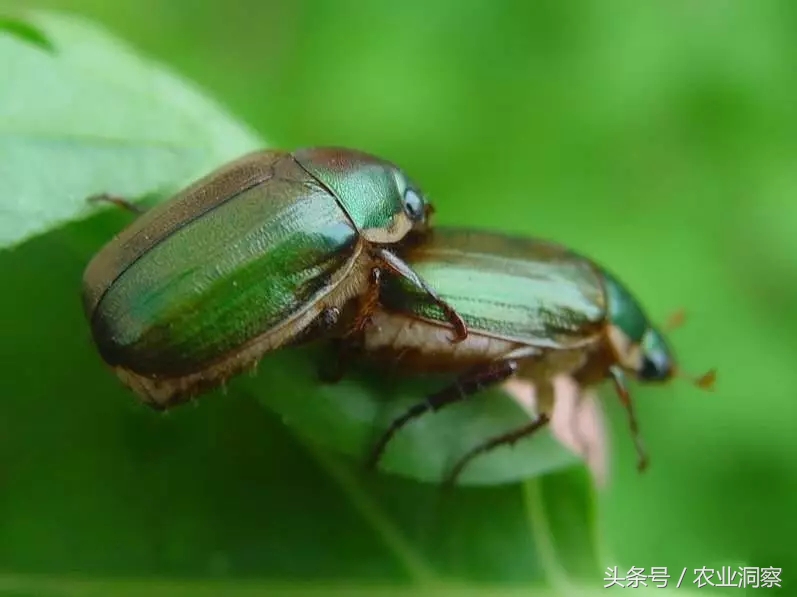Scarab beetle is one of the main pests common in orchards, when serious, adult insects can eat flowers, young leaves, its larvae (grubs) endanger the roots of crops, is the most harmful population of underground pests, the harm to fruit trees is large, seriously affecting the economic benefits of orchards.

Scarab beetles are adults of the underground pest grub and are an omnivorous pest. Larvae or adults often overwinter in the soil. There are 5 common species of scarab beetles, such as apple-haired scarab beetles, patina scarab beetles, black velvet scarabs, white star-flowered scarabs, and small blue-and-white scarabs.
Species and hazards: Apple-haired scarab beetles, small blue-flowered scarab beetles and black-velvet scarab beetles all use adult insects to bite the buds, buds, petals and young leaves of fruit trees such as apples, pears, peaches and apricots. Severe occurrences often eat up the flowerware or young leaves, affecting the yield and potential of fruit trees.
The aeruginosa beetle eats the leaves of the fruit trees with adult insects, and in severe cases, the leaves can be eaten, leaving only the veins and petioles, especially for young fruit trees.
The white star flower scarab beetle nibbles on the flesh of the fruit with adult insects, forming insect spots, which later decay and fall off.
Occurrence rules: the first wave: scarab beetles mostly overwinter in the soil, and the excavation period is from late March to early April, mainly harming flower tools, young shoots and young leaves.
The second wave: from the end of April to the beginning of May, the second wave of scarab scarab hazards will strike, mostly black golden turtles and patina scarabs, mainly to harm leaves and moths to eat young fruits, apple and walnut orchards should be highly concerned. The third wave: before and after the wheat harvest, endangering the leaves of fruit trees. Fourth wave: summer, endangering ripe fruit.
Control of scarab beetles: 1 Agricultural control: in late autumn and early winter combined with the application of base fertilizer to deeply turn the orchard to eliminate a large number of larvae (grubs); orchards should be fully decomposed when applying farm manure to effectively reduce the source of grubs; in the orchard or around the orchard, try not to plant beans, peanuts, potatoes, sweet potatoes and other crops and often remove weeds around the orchard, destroying the living environment of adult insects to spawn.
2 Artificial hunting
Taking advantage of the pseudo-death nature of the scarab beetle, in the evening, lay a piece of plastic sheet under the tree tray, and then shake the branches to shake the scarab beetle to kill. Or kill the scarab beetles in boiling water, fish them out and mash them in the sun to ferment and stink, filter the canopy with water, and have no scarabs for 10 to 15 days.
3 booby-traps 1 part, vinegar 3 parts, wine 0.5 parts, water 10 parts, mixed, put into a canned bottle, hung on the tree, every day to collect insects to add liquid, 15 days to change the sweet and sour liquid. The bottle needs to be hung on the upper middle branch of the unobstructed area around the canopy, so that it is easy to be found by long-distance bugs. Pay attention to the direction of the wind, and you need to hang it in the position of the upper air outlet. Using phototropism to trap adult insects, all kinds of scarab beetle adults have strong phototropism, and can be booby-trapped by solar insecticidal lamps or vibration frequency insecticidal lamps. More practical agronomic knowledge in #Farming Insights!